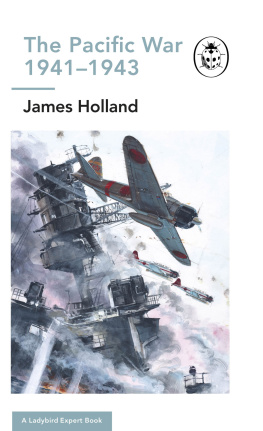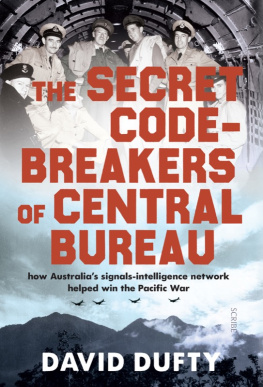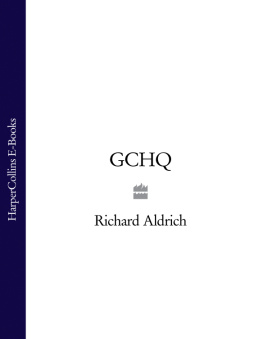
This edition is published by PICKLE PARTNERS PUBLISHINGwww.picklepartnerspublishing.com
To join our mailing list for new titles or for issues with our books picklepublishing@gmail.com
Or on Facebook
Text originally published in 2007 under the same title.
Pickle Partners Publishing 2015, all rights reserved. No part of this publication may be reproduced, stored in a retrieval system or transmitted by any means, electrical, mechanical or otherwise without the written permission of the copyright holder.
Publishers Note
Although in most cases we have retained the Authors original spelling and grammar to authentically reproduce the work of the Author and the original intent of such material, some additional notes and clarifications have been added for the modern readers benefit.
We have also made every effort to include all maps and illustrations of the original edition the limitations of formatting do not allow of including larger maps, we will upload as many of these maps as possible.
MORE TO THE STORY: A REAPPRAISAL OF U.S. INTELLIGENCE PRIOR TO THE PACIFIC WAR
BY
LCDR JAMES R. STOBIE, U.S.N.
TABLE OF CONTENTS
Contents
TABLE OF CONTENTS
REQUEST FROM THE PUBLISHER
ABSTRACT
Early on Sunday, 7 December 1941, the air and naval forces of the Imperial Japanese Navy attacked the U.S. Pacific Fleet at anchor in Pearl Harbor, Hawaii. President Franklin D. Roosevelt (FDR) recorded the day as a date which will live in infamy in his speech to a joint session of Congress. Subsequent investigations and histories judged U.S. intelligence as unprepared in its failure to predict the attack at Pearl Harbor. Yet FDR also listed the other locations Japan attacked in those first twenty-four hours starting with the attack at Kota Bharu in Malaya. Reviewing U.S. intelligence estimates and war warning messages against Imperial Japanese war plans and actions, U.S. intelligence understood Imperial Japans intentions and plans far better than is recorded. Of the places listed in the 27 November 1941 war warningthe Philippines, Thai or Kra [Malay] Peninsula and possibly Borneotwo were attacked on that first day of war and the last, Borneo, a week later. On that first day of war, Japan also attacked Guam, Hong Kong, Singapore, and Wake and Midway Islands, the latter two reinforced against impending war with Japan in early December 1941 by U.S. aircraft carriers. The surprise of the attack on the U.S. Pacific Fleet overshadows the accuracy of U.S. intelligence estimates prior to the Pacific War.
ACKNOWLEDGMENTS
I would like to thank and offer my most sincere appreciation to the multiple historians that offered their time to discuss U.S. intelligence prior to the start of the Pacific War. As a student of history, it was an honor and privilege to speak with the following established historians: Thomas Fleming, Dr. Donald M. Goldstein, David Kahn, Stephen Budiansky, Dr. George Victor, Akira Iriye, Mark Peattie and Daniel Martinez of the U.S.S. Arizona National Memorial. I would like to thank the research librarians of the Combined Arms Research Library. Special appreciation belongs to Dr. John Kuehn and Dr. Jonathan House for their guidance, editing, and counsel. The greatest experience during this year has not been writing about a topic I hold dear but learning the craft of being a historian from these two gentlemen. I owe much to my wife and daughters for tolerating the piles of books and papers strewn about the house, the repetitive discussions about intelligence and Pearl Harbor and hours away from home at the library. None of this would have been worthwhile if it were not for the love of my daughters Isabelle, Sophie, and Grace and my wife Kelly.
I would like to dedicate this thesis to all of the intelligence professionals supporting U.S. policy prior to the start of the Pacific War. Many continued to work in intelligence during one of the costliest wars in history, allowing for remarkable victories including the Battles of the Coral Sea and Midway. Others in the Navy returned to the unrestricted line community and served with distinction as combat commanders.
ACRONYMS
AWSAir Warning System
CIACentral Intelligence Agency
COIOffice of the Coordinator of Information
COMINTCommunications Intelligence
CNOChief of Naval Operations
DNIDirector of Naval Intelligence, U.S. Navy
FBIFederal Bureau of Investigation
IGHQImperial General Headquarters
IJAImperial Japanese Army
IJNImperial Japanese Navy
NEINetherlands East Indies
ONIOffice of Naval Intelligence
OP-12Office of Naval Intelligence, U.S. Navy
OP-16War Plans Division, U.S. Navy
OP-20Office of Naval Communications, U.S. Navy
OP-20-GSecurity Section, Office of Naval Communications, U.S. Navy
OSSOffice of Strategic Services
SISSignal Intelligence Service
USAFFEUnited States Armed ForcesFar East
WPDWar Plans Division
ILLUSTRATIONS
- Simplified Chart of Executive Branch as of 7 December 1941.
- Simplified Chart of War Department as of 7 December 1941.
- Simplified Chart of Navy Department as of 7 December 1941.
- The Imperial Japanese Navy High Command Organization.
- The West Pacific and East Asia in 1941.
- Major Japanese War Objectives and Planned Opening Attacks.
- Japanese Centrifugal Offensive, December 1941 (South-West Pacific).
- Japanese Air Operations in the Philippines.
- Japanese Operations in South-West Pacific.
CHAPTER 1INTRODUCTION
Yesterday, December 7, 1941a date which will live in infamythe United States of America was suddenly and deliberately attacked by the naval and air forces of the Empire of Japan....
The attack yesterday on the Hawaiian Islands has caused severe damage to American naval and military forces....
Yesterday the Japanese Government also launched an attack against Malaya.
Last night Japanese forces attacked Hong Kong.
Last night Japanese forces attacked Guam.
Last night Japanese forces attacked the Philippine Islands.
Last night the Japanese attacked Wake Island. And this morning the Japanese attacked Midway.
Japan has, therefore, undertaken a surprise offensive extending throughout the Pacific area. {1} President Franklin D. Roosevelt, before Congress, 8 December 1941
When we remember Pearl Harbor, what do we forget? {2} Waldo H. Heinrichs Jr., from Pearl Harbor in a Global Context
Waldo Heinrichs identifies the American obsession with Pearl Harbor that neglects the other attacks by Japanese forces on the first day of the Pacific War. The date which will live in infamy, 7 December 1941, is based on the time of the attack at Pearl Harbor and when it was reported to Washington, DC. The better reference point is Tokyo, Japan, capital of the empire striking Allied possessions throughout Southeast Asia: 8 December 1941. Contrary to popular opinion, the attack at Pearl Harbor was not the first attack in the campaign; at 1245 on 8 December 1941 (Tokyo time), Imperial Japanese forces and British forces in Malaya engaged each other at Kota Bharu. {3} This corresponds to 0545 on 7 December 1941 (Honolulu time), nearly two hours before the Japanese attack at Pearl Harbor. {4} The naval air forces of the Imperial Japanese Navy caught the U.S. Pacific Fleet by surprise on 8 December 1941 (Tokyo time), but while this attack surprised the admirals and generals in Hawaii and the Philippines, the beginning of hostilities between Japan and the U.S. did not.







